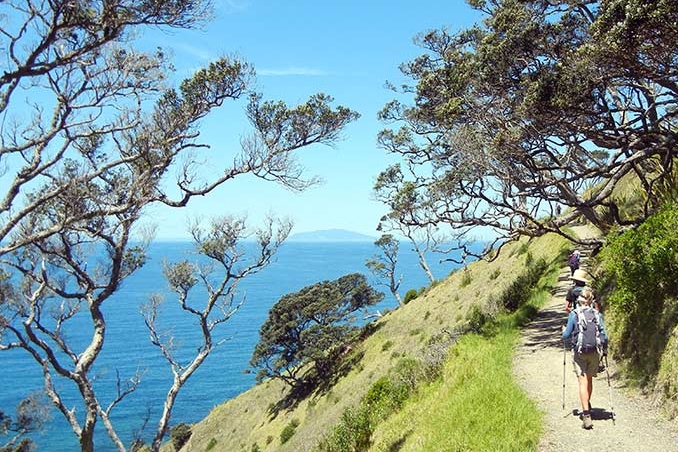
Here's our summary of key events overnight that affect New Zealand, with news even President Xi is scared of reactions to higher property and income taxes.
Firstly however, there is a range of data out in the US today, pointing to different outcomes.
Housing starts dropped sharply in February and were -4% lower than the same month a year ago. That is a drop of -50,000 new houses worth some US$12.5 bln and not insignificant.
But overall industrial production was up +4.4% in February from a year ago, and well above analysts expectations of a 0.3% gain. That gain brought quite a strong rise in capacity utilisation and its highest since January 2015.
And consumer confidence is rising with one survey at its highest level since 2004 and a new record high. Driving this is the immediate expectation of conditions; consumers are wary of longer-term consequences of current policies, with that part of the index dropping.
In China, President Xi may be a one-man autocrat now but even he fears how his subjects might react to a property tax or new income taxes. The National Peoples Congress pointedly avoided any changes in these areas.
As a good proxy for real activity, China's rail volumes increased +8.2% in February from the same month in 2017 although that was down from a +9.4% increase in January.
More than 100 countries have agreed to try and get an international consensus on how to tax digital businesses across borders as part of the BEPS initiatives - all in the next two years. Trying is one thing, but getting agreement may be tough.
In Russia, their central bank is shoring up two financial institutions hit by international sanctions over Crimea violations. It will cost the Russians up to 3.8% of their GDP to protect these two banks. It comes at a tricky time for Russia who is facing new sanctions after their chemical attack in the UK.
In Australia, their Reserve Bank has warned investors that a shift higher in global interest rates could impact other asset classes as major governments shift from net buyers to net sellers of bonds.
The UST 10yr yield has bounced back to 2.85% today on Wall Street on the confidence data. The Chinese 10yr is at 3.86% (down -1 bp) and the New Zealand equivalent is at 2.91% (unchanged).
Local swap rates ended the week little changed although the unexpected rise in the one year swap rate has persisted. The general falttening of the curve has resulted in it being its flattest now since the start of the year
The VIX has moved steadily lower over the past week but is still elevated compared to 2017. The Fear & Greed index is moving back from its extreme 'fear' levels of this time last week.
Gold markets aren't closed yet but the price of gold softer today and is now at US$1,313 in New York. That is -US$10 lower than what it was at this time last week.
Oil prices are moving higher today, up about +US$1 with the US benchmark now just over US$62 and the Brent benchmark over US$66/bbl. The US active rig count is now at its highest level in three years and about to reach 1,000.
The Kiwi dollar is ending the week down at just over 72.1 USc. On the cross rates we are at 3.4 AUc and 58.7 euro cents. That puts the TWI-5 back at 73.3 and still in the 2018 tight range.
Bitcoin is now at US$8,510 and up +5.3% from where we left it yesterday afternoon. But it did fall to US$7.935 about ten hours ago, so it has been a steady recovery since then.
The easiest place to stay up with event risk today is by following our Economic Calendar here ».
Daily exchange rates
Select chart tabs
8 Comments
I see this morning's Herald headline: "Property Hotspots Revealed".
Geln Innes 19.6%, Mt Albert 19.02% . . . Wow - to the casual reader the Auckland property prices are still hot.
Then I read the data is from B&T for the second half of 2016 (before the market reached its peak at the end of 2016/early 2017) to the last six months of 2017 (just before the market started to really cool/stabilise.
What an example of biased extreme selective land agent speak to talk up the market; and supported by Granny Herald protecting its B&T advertising revenue.
...next trendy thing, spot property prices conveniently compared to 2014 CV for a price comparison. It's a tough sell on the way down - aye Zachary!
If you read the herald you deserve what you get.
Anybody with two brain cells to rub together avoids it like the plague
R'amen to that. And stuffis no better.. one foray into the comments section and you end up with Forest Whittaker eye.
Forest Whittaker eye LMAO
OMG I can see from the chart that Remuera made the TOP 10 list woohoo!! LOL!!
Oh the superiority of central planning shines as it become apparent the National Party Congress have their snouts in the trough just like their western counterparts.
The real reason Brexit and Trump happened??? https://www.theguardian.com/news/2018/mar/17/data-war-whistleblower-chr…


We welcome your comments below. If you are not already registered, please register to comment
Remember we welcome robust, respectful and insightful debate. We don't welcome abusive or defamatory comments and will de-register those repeatedly making such comments. Our current comment policy is here.